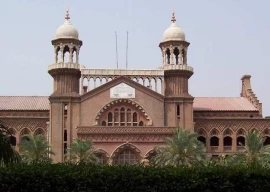
The recently launched World Drug Report 2012 by the United Nations has noted a decline in poppy cultivation in Pakistan. While such a trend is a good sign, Pakistan still provides a major drug smuggling route to Afghanistan.
Pakistan is, in fact, considered both a destination and transit country for approximately 40 per cent of the opiates produced in Afghanistan. An estimated third of drugs produced in Afghanistan are smuggled to other countries via the coastal areas of Balochistan alone.
Sharing almost a 2,500-kilometre porous border with Afghanistan, it is understandable why Pakistan remains vulnerable to this drug smuggling problem. Drug trade across the Afghanistan-Pakistan border became a major problem in the early 1980s, after the Soviet invasion of the country and the US decision to launch a proxy war with the help of Pakistan. At that time, the drug trade was allegedly even used by intelligence agencies to help raise funds for the Afghan mujahedeen.
However, determining who benefits from the drug trade is not so easy. Suspected Taliban endorsement of this trade to finance militancy has earned the current drug trade the label of ‘narco-jihad’. But the problem seems more complicated than that.
This ongoing cross-border drug trade has by bred multiple linkages among drug traffickers and criminal elements throughout our larger region. Besides utilising southern routes through Pakistan, drug traffickers have forged western routes via Iran and northern routes through the central Asian states, which have become prominent routes in a global drug trade regime. Establishment of this section of the drug route has also implicated Russia in the drug trade due to the large-scale drug flows from former Soviet central Asian states into Russia and beyond.
Opium production has become deeply entrenched in the socio-economic fabric of Afghanistan and is protected by powerful vested interests. The decade-long Nato presence in the country has done little to dissuade poor farmers from growing this ergonomically efficient but otherwise lethal crop by providing them with alternative economic opportunities. The conflict-ridden country has thus earned the dubious record of becoming the largest producer of illicit opium in the world.
Drug abuse and addiction problems are also worsening along trafficking routes. The UN Office on Drugs and Crime estimates that of the $27 to $30 billion worth of drugs smuggled from Afghanistan via Pakistan to other parts of the world, annually, $1.5 billion worth of drugs stays within Pakistan to fuel the habit domestically.
While drug abuse is now an evident problem in Pakistan, there is still a dearth of data concerning usage and distribution patterns. The most recent drug use data available in Pakistan was collected through the National Assessment of Problem Drug Use in 2006. The study was conducted in 23 districts and estimated there to be over six million drug users in Pakistan. Over 75 per cent of them were heroin users. Many of them were using more than one substance at a time including tranquilisers and antihistamines, alongside heroin itself. Over 125,000 of them were found to be injecting drug users. However, this assessment has since been criticised for underestimating the extent of the problem.
Drug use is not confined to the illiterate, the poor or even men. Street children fall prey to glue-sniffing, which is not only harmful but also often becomes a pathway to the use of narcotics, including not only hashish but also heroin.
The drug trade across the Afghan border is now too sophisticated for any one country to address singlehandedly. Unfortunately, the international community has not been able to curb the production of opium within Afghanistan and has also not done enough to facilitate regional cooperation to adequately address this problem, despite the fact that it is ultimately Western markets where there is the greatest demand for illegal opiates that originate from Afghanistan.
Published in The Express Tribune, July 9th, 2012.
COMMENTS (2)
Comments are moderated and generally will be posted if they are on-topic and not abusive.
For more information, please see our Comments FAQ













































There are a few factual errors in this your. Firstly the 2006 Assessment looked at the extent of problem opioid users (heroin, opium and synthetic opioids or painkillers) in Pakistan and not of drug use. The estimated number of problem opioid users were over 600,000 and not 6 million as quoted in the article. The criticism of the assessment is misplaced as it never meant to look at the overall drug use in the country and had focused only on problem opioid use in the country - you need to read the report to understand the difference between the two terms.
The other main factual misrepresentation is that the major demand for heroin is in Europe or Western world. According to UN data 70% of the World's estimated opiate (heron and opium) users are in Asia and with higher than the global average prevalence in Afghanistan and neighboring countries. So despite Western Europe being a lucrative market in terms of profits for the traffickers the majority of the demand for Afghan opiates is in Asia - Afghanistan, Iran, Pakistan the 5 Central Asian Republics and so on, and then you have China. Please see the 2012 World Drug Report for this.
Thirdly the major opium cultivation and production in Afghanistan is in 3 Southern provinces and 90% occurs in Helmand only and therefore in territories controlled by Taliban. And this cultivation as you have also pointed out is part of the Afghan Taliban insurgency. It would be helpful for you to read the UNODC annual Opium Poppy Survey in Afghanistan that is conducted and published every year.
There are a few factual errors in this article. Firstly the 2006 Assessment looked at the extent of problem opioid users (heroin, opium and synthetic opioids or painkillers) in Pakistan and not of drug use. The estimated number of problem opioid users were over 600,000 and not 6 million as quoted above.
The other main factual mis representation is that 70% of the World's estimated opiate (heron and opium) users are in Asia and with higher than the global average prevalence in Afghanistan and neighboring countries. So despite Western Europe being a lucrative market in terms of profits the majority of the demand for Afghan opiates is in Asia.
Thirdly the major opium cultivation and production is in 3 Southern provinces and 90% occurs in Helmand only and in territories controlled by Taliban.
I will write Syed Mohammed Ali a detailed response.